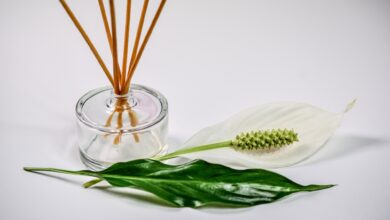Natural
Natural stone tiles may not be the easiest material to use and care for walls and floors, but they are certainly the most beneficial in terms of quality, and also return on investment as they are common
. The idea is that a natural stone wall or floor will add value to your property. In addition to these benefits, natural stone tiles are also extremely hard and in most cases, with some care and attention, as long as the house does not run.
As mentioned earlier, tile sealing and maintaining natural stolen tiles may involve more work, but some alternatives such as wood flooring. One reason for this is that stone is a very strong material that is harder to cut than wooden planks, or even ceramic tiles, which are scored and stripped.
In addition, you may need to create a sub-surface on which to place your tiles if they are uneven or cracked. This can be done in most cases with a good quality self-leveling compound, available from renowned tile and flooring specialists.
When making natural stone tiles for natural, make sure to spend time inspecting both the chips and the surface itch. In general, natural stone tiles will carry a light wax coating to protect them from possible corrosion. Don’t worry too much about cleaning the tiles before laying them.



They will need to be done after they are laid and ready anyway. When laying, try to take several packs of tiles, to help you achieve a truly random and harmonious aesthetic.
When it comes to cutting natural stone tiles, the best way to do this is to have an electric tile wet cutter. In addition to being quite thick and strong, stone tiles are also a natural material and therefore have natural veins and defects, which would not be appropriate to cut using a manual tile cutter. This will increase the chances of the tile breaking.
Be aware that snaps can be dirty and can cause significant amounts of dust and debris. So either tries to perform cutting outside or in a safe environment. In addition to protecting hands and eyes, always make sure to wear appropriate clothing, and remove electrical sockets or electrical equipment and remove anything that may cause wetness in the process.
When marking the cut line on a natural stone tile, you may prefer to use a crayon instead of a pencil, which is unlikely to make a special mark on the tile.
When you reach the end of your cut, take care of the extra slowness, as if you are moving too fast and forcing the tile through it so that it is difficult to use. If you are cutting particularly large tiles, try to help someone stabilize the tile, as the weight of any piece of tile can start pulling the whole piece.
Laying your natural stone tiles is a relatively simple process that involves the use of ad tile adhesive to fix the surface of the tiles. Some types of particularly unsafe tiles, such as travertine, require tile adhesive ‘back buttering before laying.
It is also important if there are cracks under your tiles as ‘buttering’ will help seal the cracks and increase the strength, and this is considered good practice in any case.
Be careful when laying natural stone tiles, as they can be quite heavy. Make sure to minimize unnecessary stretching to reduce the risk of back strain. You can use the spiritual level to help test the tile level before moving on to the next level, and a light tap with a small malt can stimulate any corner that is too high.



Once your natural stone tiles are finished, it is very easy to uproot them. Use a mask when mixing your tile grout as it can be quite a dusty process. Always mix your grout powder with clean, cold water, and if you are laying tiles in the bathroom or kitchen, you may want to use grout tiles with antibacterial agents to reduce road and mildew growth.
Using the edge of the trowel, feel free to fill in the space between your tiles (prepared using spacers) and keep the floor at a 45-degree angle. When you use grout to smooth the filling and remove any unwanted additions, the grout profiling tool can help.
It is important to remember to take care of your natural stone tiles, and before you finish your tiling work, you must seal the tiles to prevent the stone from getting stained. This seal needs to be applied after tile and grout cleaning, and any remaining dust, adhesive, or grout has been removed with the removal of residue.
After removing the residue, the seal can be attached to prevent material and liquids from entering the stone holes and leaving potential marks. In order to keep the tiles in good condition, this seal needs to be maintained regularly.



